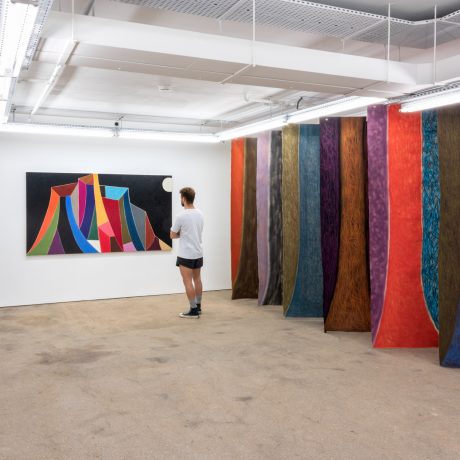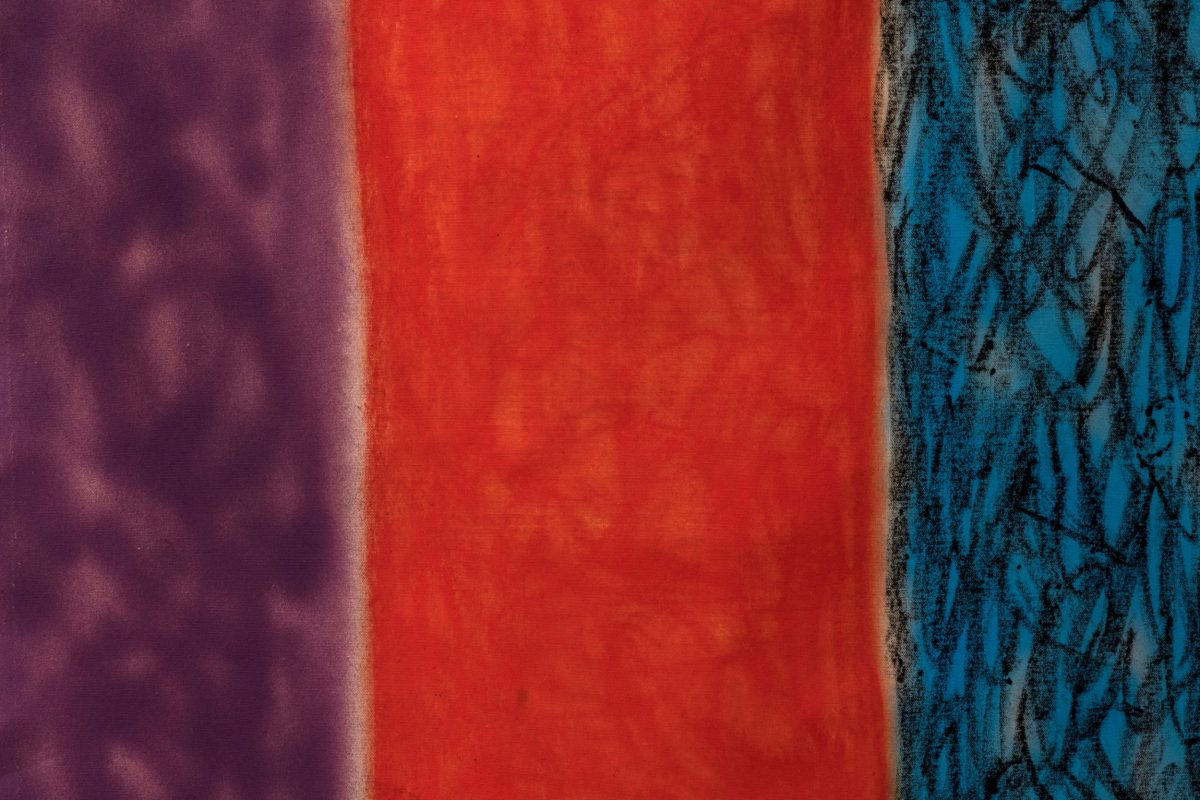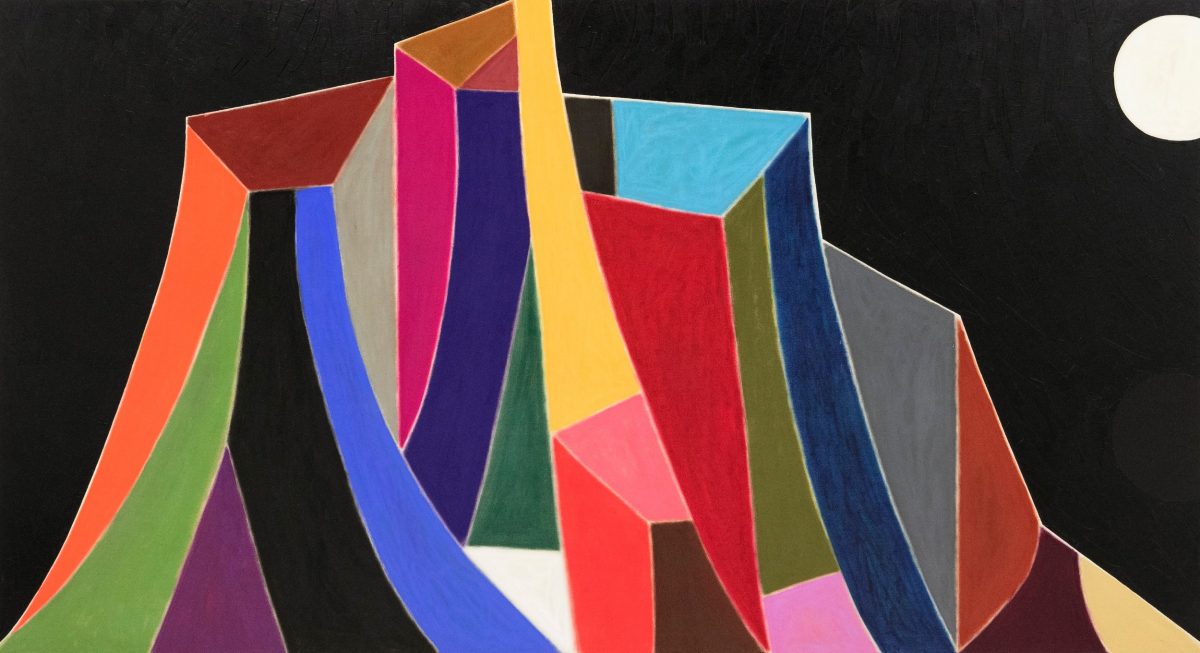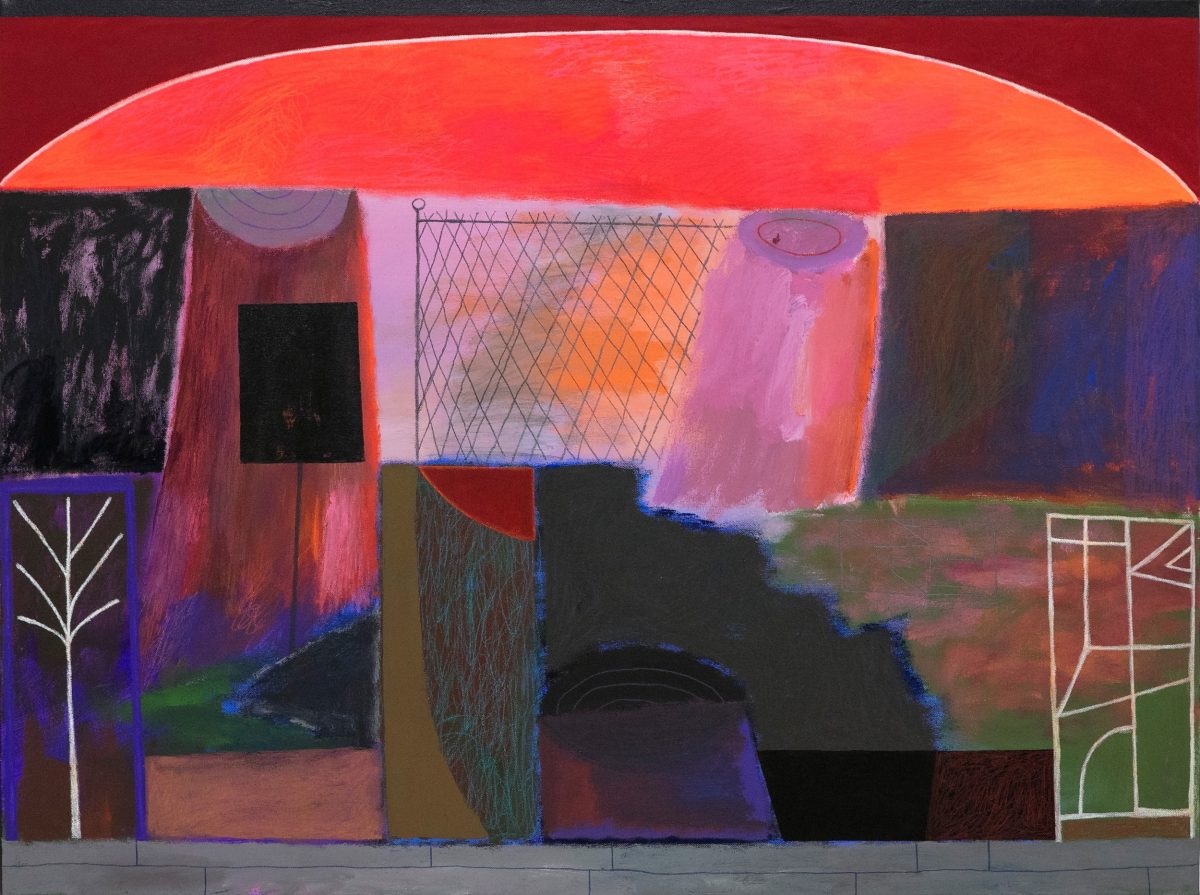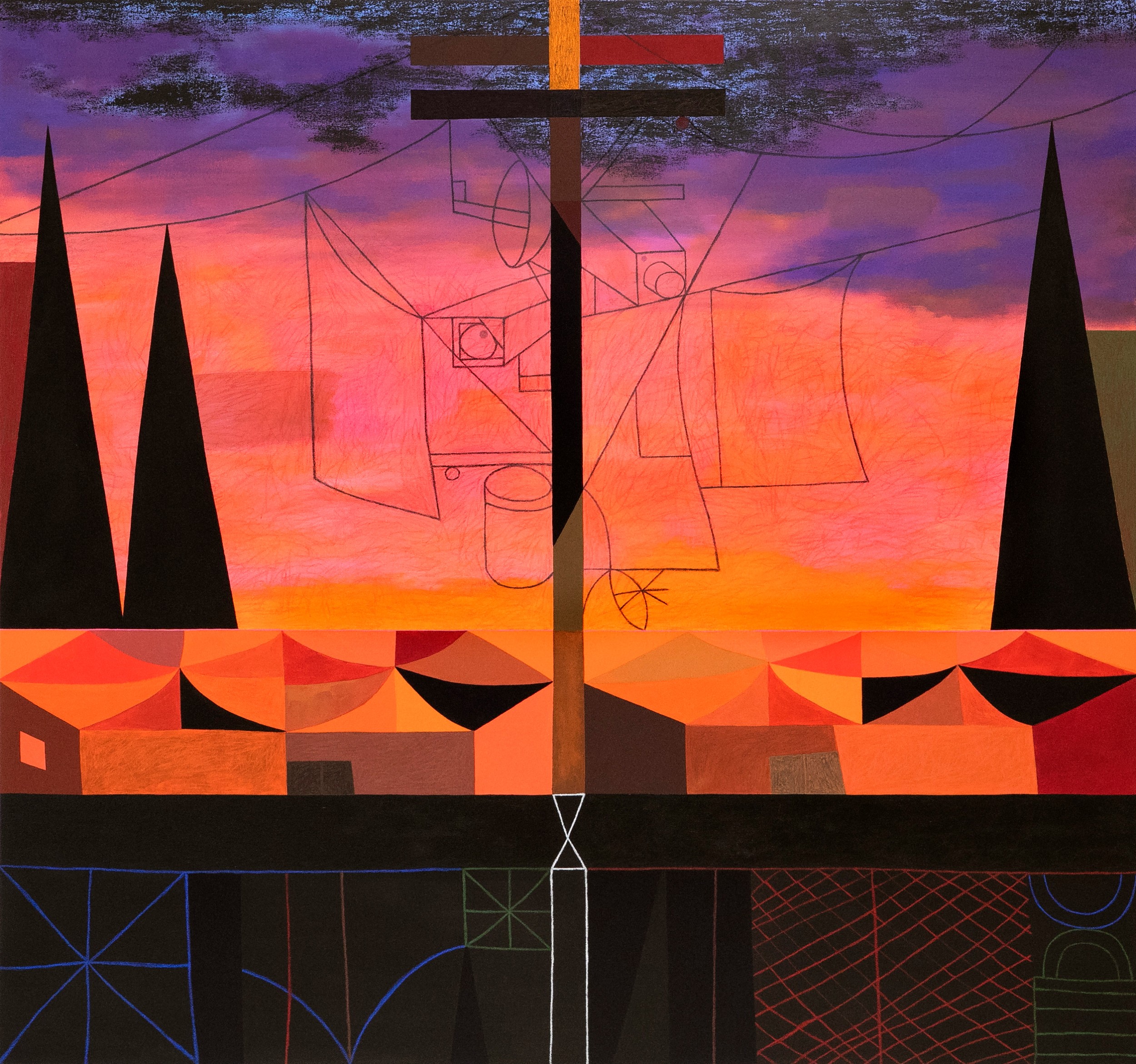
Oakland, California-based Muzae Sesay uses a combination of oil pastel, pencil, oil bar and charcoal to build his earthy, atmospheric canvases, which on first glance may appear aesthetically-minded. Look closer though, and his arcing lines and uneven shapes morph into the outlines of surveillance equipment; the floating cylinders become tree stumps; and the gentle striping of Backwards Obstacle, Over and Through resembles the rusted hostility of corrugated metal sheets arranged into an impenetrable barrier.
That work is a reimagining of the US-Mexico border. Others reference the climate crisis or FEMA Camps in the US: detainment facilities which largely exist in a black hole of regulation and public knowledge, leading to comparisons with examples of concentration camps. But these topics are far from dominant or indeed pre-prescribed, he explains.

Of his current show at Public Gallery, London, Sesay says that his imagery “comes from themes and motifs spreading and manifesting in my mind as I make the work.” In a basement space, his fabric Tree Flags hang procession-like while his generous colouring seems to drip downwards, as if it might collect in a pool on the floor beneath each. By experimenting here with materials, mark-making and allegories alike, he explains, “paintings become a composition of compositions.”

Your work serves as a commentary on geopolitical themes through surveillance motifs: how have you incorporated that with your wider imagery?
The work has no boundaries really. The commentary that can be gathered from the show comes from those themes and motifs spreading and manifesting in my mind as I make the work. Sometimes it’s geopolitical, sometimes it’s mundane, sometimes it’s about love, sometimes it’s about you and me. The use of colour and imagery comes quite naturally sluggish from my process of connecting to each specific piece and idea.
“Sometimes it’s geopolitical, sometimes it’s mundane, sometimes it’s about love, sometimes it’s about you and me”
Can you describe your material process?
My material process overall is based on real-time experimenting with both classic and modern art media. I push drawing media to act more in the sense of painterly gestures. Playing with different canvas types, sheens, textures, pigments, and marks; the relationship and juxtaposition of material start to tell a story of depth and space. Paintings become a composition of compositions.
You’re using these brown, earthier canvases for the first time: how has that impacted the work, both visually and allegorically?
I loved working on brown canvas, I can’t wait to do it again. I’m always trying to add new manoeuvres to the practice while continually searching for moments of diagonal steps forward. In terms of the brown canvas and its impact, I think that’s better left to the viewer to determine. I will say, working directly on dark canvases, the colour becomes apprehensive and unsure of its ability to be seen. It’s a subtler and quieter moment that requires a sense of attention to be experienced.
What was the first piece of art to have a profound impact on you, and why?
I don’t really remember the first art piece that had a profound impact on me. However, my most impactful art moment happened probably before I even knew what art could be. Some of my earliest memories are of me, around age four or five, scribbling with crayons on paper. When I was finished, I would run to the living room where my mother would act so shocked and tell me I created a masterpiece. And every time I would run back and repeat the process, my mother had the same astonished reaction. I remember being really happy that something I made was deemed so important by an adult. I believed my mother in those moments and I still hold on to that same fire.

“Working directly on dark canvases, the colour becomes apprehensive and unsure of its ability to be seen. It’s a subtler and quieter moment”
Tell us an artist or photographer who you think should be better known.
Arrington West, Lenworth McIntosh, Yetunde Olagbaju, Soleil Summer, Yoni Asega, Adrian Walker, Wardel McNeal, Chris Burch, Cinque Mubarak, Brett Flanigan, Cannon Dill, Liz Hernández, Maria Paz, Ryan Whelan, Aaron Jupin, Molly Bounds, Jean Nagai, Soumya Netrabile, Chaz Bear, Chelsea Wong, Isaac Vazquez Avila, Lena Gustafson, Kellen Chasuk, Lilah Slager-Rose, Olivia Nevins-Carbins, Saif Azzuz, Ezra Teshome, Austin Leong, Connor Sacks, Alicia McCarthy, Alicia Hougey, Ashley Wentling.
Ravi Ghosh is Elephant’s editorial assistant
All images courtesy the artist and Public Gallery
